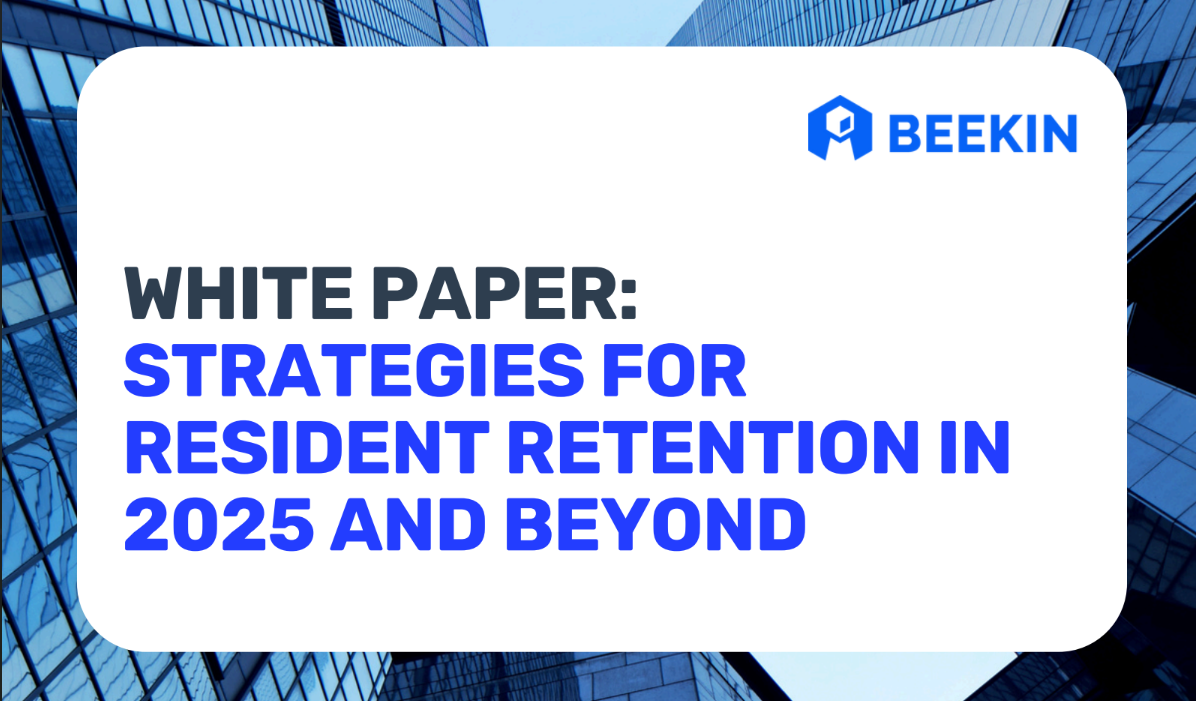
Resident Retention Strategies in 2025 and Beyond
Executive Summary
Resident retention is a critical factor in multifamily property management, directly impacting revenue stability and operational efficiency. Historically, renewal retention rates have remained strong, reflecting the stability of rental housing. However, recent economic shifts, including rising interest rates reducing homeownership affordability and the increasing commoditization of multifamily housing, have forced operators to focus more on service differentiation. This white paper explores innovative strategies to enhance renewal rates, drawing insights from a recent industry webinar. Below are five key findings:
1. Centralization Enhances Efficiency
A centralized approach to renewals streamlines processes, reduces redundancy, and improves resident engagement.
2. Personalization Drives Retention
Data-driven, customized renewal offers lead to higher acceptance rates.
3. AI and Automation Improve Decision-Making
Predictive analytics and automated communication can proactively address resident concerns.
4. Operational Shifts Are Key
Leasing and marketing teams are evolving to prioritize retention alongside new lease acquisition.
5. Best Practices from Successful Operators
Case studies demonstrate that strategic incentives and proactive outreach result in significant renewal rate improvements.
Background: Market Trends Shaping Resident Retention
Renewal retention rates have historically been strong, providing stability for operators and investors alike. However, several market forces are reshaping resident retention dynamics:
Rising Interest Rates & Declining Homeownership – Higher mortgage costs have kept many renters in the multifamily market, increasing demand but also raising expectations for service quality.
Commoditization of Multifamily Housing – As new developments flood the market, rental communities face growing competition, making service, experience, and retention-focused initiatives more critical than ever.
Shift Toward Service Differentiation – With limited pricing power due to supply pressures, operators are focusing on customer experience, personalization, and enhanced resident engagement to maintain high renewal rates.
Analyzing year on year rent growth for the entire United States leveraging Beekin’s same-store rent indices, we can see that rental growth peaked post COVID, and has remained subdued prior to and after the period. The same period also saw a rise in renewal retention to 58-60% for renters in the 21-22 period and subsequently came down.
These factors highlight the need for multifamily operators to rethink traditional renewal strategies and adopt a more service-oriented approach.

Steve Boyack, COO JVM Realty
"Creating a dedicated renewal team allows us
to focus on resident retention without
distractions, leading to more personalized and effective renewal offers."
69% operators between 5,000-15,000 units are compensating teams for renewals
The following case studies are drawn directly from the webinar discussion and highlight strategies that have led to improved renewal retention:
Case Study 1: Technology-Driven Renewal Success
A large enterprise operator saw a 300bps improvement in renewals by using resident renewal likelihood to improve renewal workflow
Case Study 2: Automation and Engagement in Action
By automating renewal offer generation, there was significant rent growth since multiple residents were significantly below market and it was overlooked
Case Study 3: Maintenance as a Retention Tool
AMLI Residential compensates maintenance technicians for every renewal to ensure they feel part of the success
Sara reflected on the power of personalized engagement, stating, “Residents don’t just want a renewal offer—they want to feel valued. Our data-driven approach allows us to craft offers that truly resonate with individual residents.”
Download the case study to learn more.



